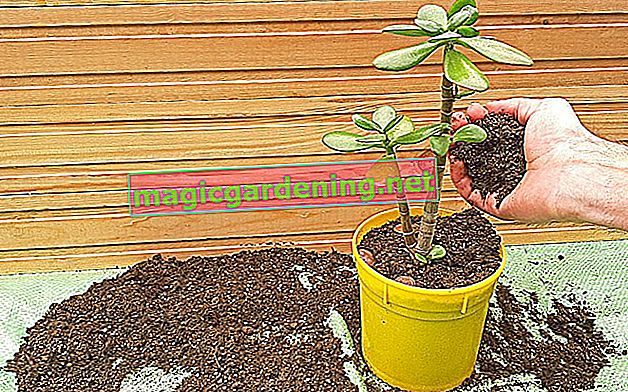
The different ways of reproduction
Forsythia can be propagated in three ways. However, sowing is more of a theoretical possibility that is not used in practice.
- Cuttings
- Lowerers
- Seeds
also read
- Propagate Rhipsalis - tips for propagating rod cacti
- Propagating hops - tips for propagation!
- Propagate beeches yourself - tips for propagation
Propagate forsythia by cuttings
Propagating forsythia by cuttings is the easiest way to grow new shrubs.
To do this, cut semi-ripe cuttings 10 to 15 centimeters in length from the plant in July and August. The lower part should be slightly lignified.
Remove the buds, flowers and the lower leaves and place the shoot in the desired location in garden soil. The first roots form within a few weeks.
Pull cuttings indoors
If it is no longer warm enough outside, you can also pull the cuttings in pots with potting soil.
Place the vessels in a warm, sunny place. To keep the soil evenly moist, wrap cling film around the cutting. You have to ventilate this cover once a day so that the soil and cuttings do not go moldy.
In the following spring you can plant the small forsythias on the spot.
Gain offshoots by lowering
Because forsythia takes root so easily, lowering is a very popular form of propagation. Make a small groove in the ground next to the shrub.
Choose a flexible shoot from the previous year and scratch it in several places with the knife. Gently bend it down and place it in the groove.
Secure the shoot with stones or tent pegs and cover it with soil so that the tip remains free. It is tied upright to a planting stick so that the new shrub grows straight up. The offshoots will be separated and planted next spring.
Obtaining forsythia from seeds
The forsythias planted in this country are hybrids that almost never produce seeds because the flowers are dry. The bushes are therefore not fertilized by bees or other insects.
Even if in a few exceptional cases fertilized seeds have formed, sowing is not recommended in order to propagate the plant.
You definitely do not get a single-variety new plant. The offshoots usually have very different properties than the forsythia variety that you want to propagate.
Tips & Tricks
If you put forsythia branches in a water glass, the shoots below can form new roots. Plant them in a pot of potting soil. In most cases, the propagation works quite well.








